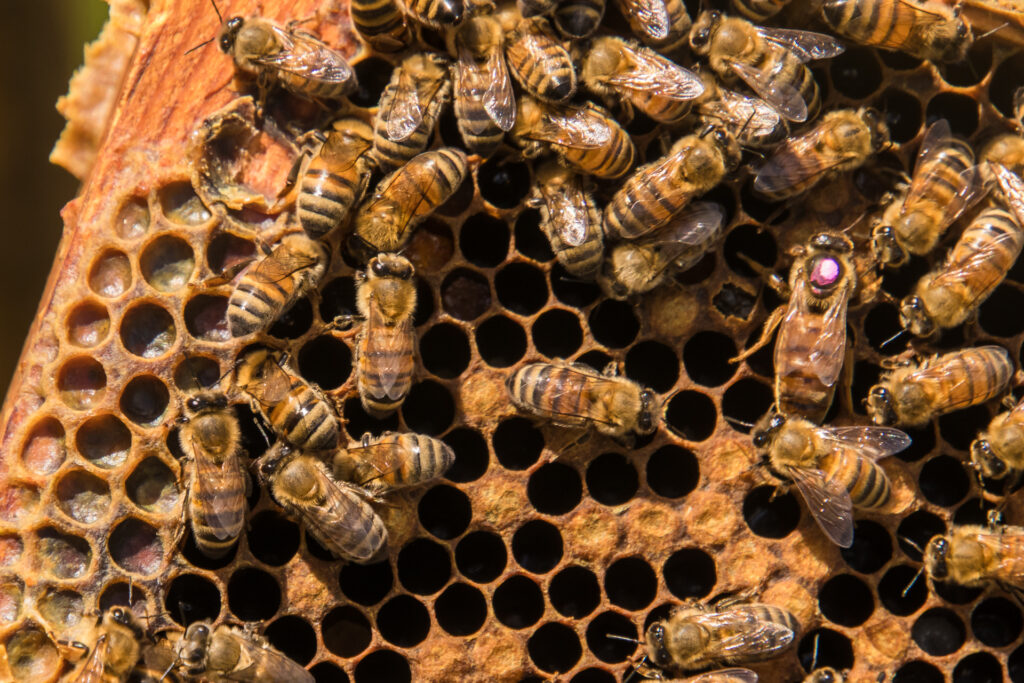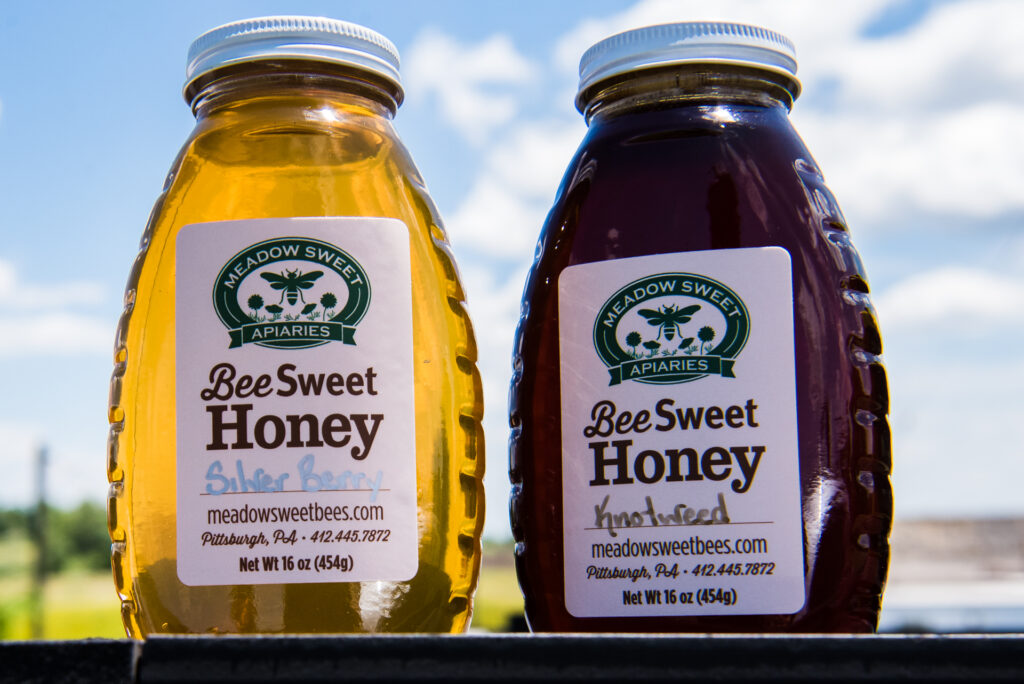WATCH: Peak Nectar Flow Means Lots of Honey at PIT
Bees thriving thanks to airport’s apiary program, sustainability focus
By Julie Bercik
Published June 27, 2022
Read Time: 3 mins
Ten years ago, a large swarm of bees settled on the wing of a Delta Air Lines flight, delaying its takeoff from Pittsburgh International Airport.
That prompted airport officials to start a small apiary program, with one yard for bees.
What a difference a decade makes. Today, there are 10 different bee yards on PIT’s more than 8,800 acres with nearly 150 total hives on airport property, said Steve Repasky, a certified master beekeeper and owner of Meadow Sweet Apiaries.
“You’ve got roughly 30,000 bees in each colony,” said Ben Shertzer, Wildlife Administrator at PIT.
That’s approximately 4 million honeybees—and the nearly 3,000 pounds of honey they create each year—supported by the airport.
The apiary program is part of the airport’s sustainability focus and a unique way to improve the environment. As part of the program, Repasky cultivates queen bees at PIT to help enhance the genetics of honeybees in areas outside of the airport as well. He also uses one of the bee yards to teach military veterans the trade of beekeeping.
Both Repasky and Shertzer oversee the bees and make routine checks on the colonies every few weeks to make sure everything is functioning properly. This time of year, Western Pennsylvania is at the peak of its nectar flow, which means bees are bringing in lots of nectar and turning that into honey.
“We want to make sure that each individual colony has that queen that’s laying eggs and reproducing like she should be,” said Repasky. “We want to make sure it has a healthy population of workers that are bringing in pollen.”
Honeybees are essential for the environment and everyday life. They pollinate 80 percent of flowering crops which turn into a third of all consumed food, according to the U.S. Department of Agriculture.
“… So basically, one out of every three bites of food,” said Repasky, as he checked one of the bee yards next to the 10,000 solar panels that help power the airport’s microgrid. “Your cucumbers, your watermelons, your strawberries, our apples, cherries, peaches, pumpkins, all of those are (available) because of the honeybees.”
“We are taking those bees that were already here anyways and we are bringing them off to these locations so they’re not sprayed—we’re not using a pesticide on them,” added Shertzer.
Repasky said the program has sparked a lot of interest from other airports. In 2020, the program was awarded the 2020 Pennsylvania Governor’s Award for Environmental Excellence.
“You hear people talking about it. We do presentations randomly for different groups that come into the airport, and this is one of the subjects they ask about,” said Shertzer.

Queen bees at PIT are marked by a purple dot on their back for easier identification by beekeeper Steve Repasky. (Photo by Beth Hollerich)
Talk about the program is also happening high in the sky.
“We had a pilot a few weeks ago mentioned, ‘You’re off of (Runway) 28L,’” Repasky said. “They happen to see them from the air, too.”
Along with preserving the threatened honeybee population, the program has proven useful in minimizing disruptions similar to the Delta flight in 2012.
In exchange for using airport property for beekeeping, Repasky offers the airport free services in helping to prevent and remove swarms. The airfield has swarm traps that are monitored. Since the start of the program, PIT has seen a reduction in bee swarms on the airfield.
With large amounts of unused land, airports are excellent sanctuaries for a declining honeybee population, which has been threatened by stresses including exposure to pesticides, parasites and poor nutrition.
PIT is among the first U.S. airports that have added apiculture, or beekeeping programs, in the past several years. Others include Portland International in Oregon, Chicago’s O’Hare and Midway, Seattle-Tacoma, Indianapolis and St. Louis Lambert, among others.
Repasky hopes to have the honey available for sale in the terminal in the future. For now, honey-seekers can visit his booth at the Sewickley Farmers’ Market every Saturday.

Nearly 4 million honeybees that reside on the airport’s property help generate almost 3,000 pounds of honey each year. (Photo by Beth Hollerich)
Watch
This Next
Read
This Next





